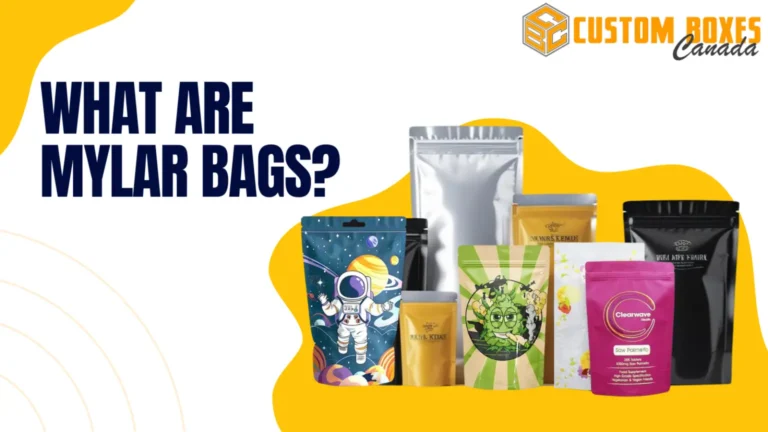When you grab a bag of chips, a box of cereal, or even a chocolate, you may see tiny colored dots on food packaging—typically lined up tidily at the edge or on the backside. While most consumers overlook these marks, they play an essential role in maintaining color integrity in packaging, improving the printing process, and providing quality control.
At Custom Boxes Canada, we consider transparent and innovative packaging practices. In this blog, we are going to unwrap the real intention behind the purpose of colored dots in food packaging printing and why they are more important than you know.
How Do Colored Dots Help in Food Packaging?
The small colored circles or squares you usually notice are called printer’s color control patches or process control patches. These marks are critical in the CMYK printing system, where Cyan, Magenta, Yellow, and Black (Key) inks are combined in different intensities to create the entire range of colors found on food packaging.
In the high-speed, high-volume world of food packaging design, maintaining color consistency is essential. A brand’s reputation can be severely damaged if its logo color or packaging tone varies from batch to batch. That’s why these color dots on packaging are the unheralded heroes. They enable press operators and packaging quality control staff to check for:
- Proper maintenance of ink density.
- No color is overused.
- The alignment of the color layers (called “registration”) is flawless.
- The printing procedure adheres to pre-approved standards.
Essentially, they provide the precise color tones desired by the brand, batch after batch.
Why Colored Dots Matter in Food Packaging Design?
Color representation in packaging is not just about aesthetics—it’s an important tool for communication. For food companies, color helps express:
- Flavors (e.g., red for spicy, blue for mint, black for coffee)
- Dietary details (e.g., green for organic, yellow for diabetic-friendly)
- Nutritional information (e.g., purple for added vitamins)
- Allergens (e.g., clearly marked to avoid peanuts or dairy)
When creating custom food boxes, accurate color reproduction allows consumers to identify important product characteristics at first sight. An incorrect shade of green may make customers wonder if a product is really organic, or a washed-out red may dilute the connection to hot flavors.
At Custom Boxes Canada, we deeply recognize the significance of such subtleties. That’s why our cutting-edge CMYK printing technology is dedicated to retaining color accuracy in packaging and achieving brand consistency and longevity.
The Printing Process and the Function of Colored Dots
Let’s move on to how such dots work in the printing process. Each color applied to the package is decomposed into percentages of the four base CMYK inks in the design and print stages. The colored dots on food packaging reflect these inks and their combinations. Each dot represents one of the four CMYK colors or a combination of them. A printing press technician uses the dots to:
- Compare the final output against the digital design file.
- Change print settings remotely to maintain printing accuracy.
- Mark any flaws in packaging and printing quality before mass distribution.
Without these dots, businesses would be flying blind, risking lackluster or inaccurate packaging colors that compromise the product’s marketability, along with its attractiveness.
Packaging Quality Control and Brand Trust
The quality assurance in packaging has a direct impact on consumer confidence. Picture yourself getting a box of “mint chocolate” protein bars in a red box; it endangers confusion and undermines the brand’s credibility. This is why quality control teams for packaging base their reliance so much on these color patches to ensure consistency, particularly when packaging changes include:
- Shifting to a new supplier
- Adopting new printing equipment
- Seasonal redesigns
- Expansion into global markets
Through the use of colored dots on packaging, brands make sure that visual signals, dietary details, and flavor indicators remain intact, unobscured, and appealing.
Beyond Color: Do These Dots Have Other Meanings?
While most colored dots on food packaging relate to printing, there are instances where brands use colored indicators intentionally to convey nutritional or dietary details. Examples include:
- Red circles may suggest spicy
- Green dots indicate organic or environmentally friendly options.
- Yellow might be employed to show diabetic-friendly or low-sugar
- Blue tends to be linked with mint, berry, or cooling
- Purple could be used to indicate vitamin-enriched
But these are usually distinct from color control patches employed in printing. It is essential to differentiate between decorative or informative packaging design elements and technical marks of printing.
What Are Colored Dots on Food Packaging? (Summary)
To answer the frequently asked question—“What are colored dots on food packaging?”—they are small, often overlooked tools that ensure your food arrives in visually perfect, brand-accurate packaging. These dots play a crucial role in:
- Regulating color accuracy in packaging
- Monitoring ink density
- Making sure of color consistency in mass production
- Improving printing process efficiency
- Supporting packaging quality control measures
Why Custom Boxes Canada Prioritizes Color Accuracy
As a leading Canadian box manufacturer, we understand that effective packaging goes far beyond the surface. We are experts at creating custom boxes that reflect your brand’s personality and ensure the highest standards of packaging printing quality.
Employing cutting-edge CMYK printing technology, rigorous quality control procedures, and a thorough understanding of customer behavior, we assist businesses in crafting packaging that communicates loudly and effectively.
Whether you’re a startup entering the marketplace or an existing food brand needing expansion, our dedication to printing accuracy, quality assurance in packaging, and consumer-focused design will heighten your product’s appearance and functionality.
Conclusion
The next time you notice colored dots on food packaging, you’ll know they are more than decoration. They guarantee printing process perfection, help communicate dietary information, and maintain brand consistency.
We at Custom Boxes Canada take precedence in packaging and printing quality so that your products appear professional and eye-catching. Whether you require food boxes with precise CMYK printing or flavor markers, we provide high-quality solutions based on your requirements.









